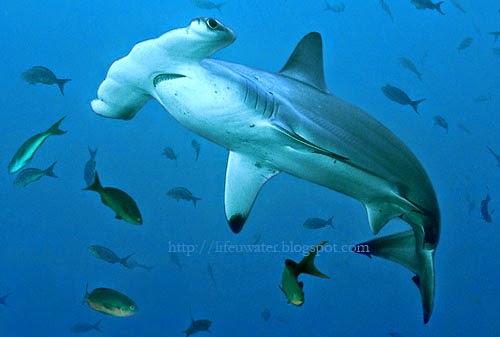The bloodfin tetra (Aphyocharax anisitsi) is a popular
freshwater aquarium fish which belongs to the family Characidae under Order
Characiformes of Class Actinopterygii. It is a species of characin from the Paraná River basin
in South America. The bloodfin tetra is also
known as True Bloodfin, Glass Bloodfin and Red Finned Tetra.
The bloodfin tetra is an excellent community species
that grows up to 5.5 cm in length and can live up to 10 years. Its notable
feature (as the name suggest) is the blood-red colouration of the tail, dorsal,
anal and adipose fin, while the body is silver in color. The bloodfin tetra has
a slender and elongated body with small mouth. Body is silver in color and it
is easily recognized due to their colorful fins.
It is an omnivore and in wild condition, it feeds
chiefly on crustaceans, worms and small insects. The male bloodfin tetra is a
bit more colorful than the female and it has a small hook on the anal fin.
Quick fact sheet of Bloodfin Tetra
Scientific/ Binomial name: Aphyocharax anisitsi (C. H.
Eigenmann & C. H. Kennedy, 1903)
Kingdom: Animalia
Family: Characidae
Kingdom: Animalia
Phylum: Chordata
Class: Actinopterygii
Order: Characiformes
Family: Characidae
Subfamily: Aphyocharacinae
Genus: Aphyocharax
Size Range: up to 5.5
cm in length
Diet: Omnivore
Tank Size: 10+
gallons
Tank Set-up: Densely
planted
Tank region: It
swims surface and Middle layer
Temperature: 64.5
– 82.5°F
Carbonate Alkalinity (dKH): 30
Carbonate Hardness (dKH): 4-12
Water pH: 6-8
Origin: Argentina and Rio Parana
Temperament: Peaceful
Care Level: Easy
Habitat: South America river basins
Lifespan: 5
to 8 years
Reproduction: Egg
layers
Breeding: The
Bloodfin tetra is also easy to breed in captivity.
Water Movement: Slow
to Medium
Aquarium care / Bloodfin Tetra Care: The bloodfin tetra is a great choice for the trainee aquarium
hobbyist due to their peaceful behavior and easy care level.
Bloodfin tetras are typically kept in schools of five
or more. They swim mainly in the upper and middle water layers and are highly
sociable fishes, mixing well with other types of tetras and tropical fish in
general, so are often kept in a community tank. Many aquarists use a blue
background in the aquarium to bring out the colors of their bloodfin tetras. However,
they will tend to nip at the fins of fish with long, wavy fins, such as
angelfish or guppies. Bloodfin tetras have also been kept in cold-water tanks,
provided the temperature does not drop below room temperature.
It requires 10 gallons or larger aquarium for 6 or
more tetras of same size. Tetras are adapted to soft and slightly acidic water
which is essential for breeding. The aquarium should have good water quality
and suitable water temperature and pH that range from 64.5 – 82.5°F and 6-8
respectively.
Feeding/Diet:
It is an omnivore fish. In captive condition it should be fed a variety of diet
such as brine shrimp, high quality flakes, frozen or freeze dried blood worms,
glass worm, live Bloodworms, Micro pellet food, Daphnia and tubifex.
Breeding: The tetra often spawns
spontaneously. At the time of spawning it jumps above the surface of the water
and releases the eggs in the water. The eggs, being heavy, fall to the floor of
the tank or water body. The female deposits 300–500 eggs.
































